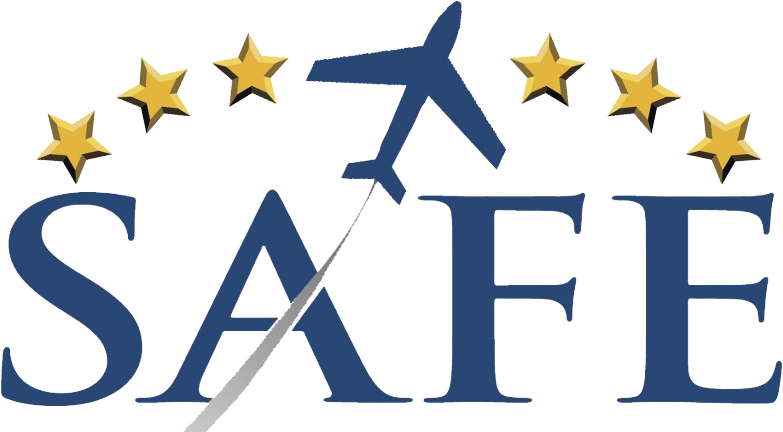Loss of control in flight (LOC-I) is the “catch-all causal factor” for the NTSB, topping the list of fatal accident causes and the “Most Wanted List” for every year in recent memory. We are excited to have Patty Wagstaff and Rich Stowell for our live ScreenCast on November 16th unpacking this dilemma. NTSB Member Earl Weener has called LOC-I a “stubbornly recurrent safety challenge.” Please join us and you can even collect Master Wings Credit from the FAA!
https://www.facebook.com/FlyGoldSeal/videos/1121149518018164/
Loss of Control Inflight is a many headed monster. People lose control after icing up in the clouds or after encountering turbulence from wake or weather. But they also inexplicably lose control and crash on sunny days turning base to final in their home traffic pattern. In almost all cases these encounters end up fatal; they mostly occur down low with no room for recovery. Spoiler alert but it seems all these accidents come back to the same cause of insufficient flying skill and knowledge in a challenging situation. We must also include judgment in the causal chain because pilots usually get into a desperate situation and lose aircraft command before they lose aircraft control. They wander into dangerous, often avoidable situations. The end result is pilots are put to an extreme test requiring our greatest piloting skills and unfortunately run out of talent. As a DPE, I always advise successful new pilots, “This flight test was not the *real* test; flying in life is the ‘real test’; stay current and sharp out there!” Apparently, we are not doing too well passing the “real test” in aviation.

What I *do* know from examining pilots for over 20 years is that many have only the most basic grasp of the real aerodynamics of maneuvering flight. And unfortunately many do not continue to train and improve after passing their evaluation (FAA Wings is a good incentive program to keep pilots training regularly). Our FAA testing standards are specifically designed to require the basic minimums of skill, knowledge and judgment. Even so, many applicants cringe when I tell them we are going to perform our stalls in the test while turning (as the ACS allows) And I frequently hear “my instructor never trained that.” (But this is usually how LOC-I actually happens in real life.) During the oral, few applicants can unpack the real forces, risks and dangers of maneuvering flight without some prompting. And in every flight review I give, I assign AOPA’s “Essential Aerodynamics” course as part of the ground training. This wonderful ASI production has no Greek letters and nicely explains the “mysteries of flight” (which I guarantee are beyond most pilots’ understanding) Please dig in here if you honestly feel challenged (for your safety) and please get some dual if your skills are rusty.
 We absolutely must acquire and retain critical, non-intuitive, “ready for action” flying skills and knowledge if we want to stay safe in the air. We have to understand aerodynamic stalls and also the effect of load on this poorly stated “stall speed”! As much as I love flying, it is certainly not all “fun and games!” (What you don’t know *will* hurt you in aviation.) But aviation *is* honestly rewards effort and what you invest in good training will be paid back in confidence and safety. This YouTube from Rich Stowell (who will be in the SAFE screencast) demonstrates amazing piloting control and situational awareness and Patty takes this even further with her amazing airshow performances. If we all could fly at this level of skill, LOC-I would disappear from the accident list and we all would be safer in the air.
We absolutely must acquire and retain critical, non-intuitive, “ready for action” flying skills and knowledge if we want to stay safe in the air. We have to understand aerodynamic stalls and also the effect of load on this poorly stated “stall speed”! As much as I love flying, it is certainly not all “fun and games!” (What you don’t know *will* hurt you in aviation.) But aviation *is* honestly rewards effort and what you invest in good training will be paid back in confidence and safety. This YouTube from Rich Stowell (who will be in the SAFE screencast) demonstrates amazing piloting control and situational awareness and Patty takes this even further with her amazing airshow performances. If we all could fly at this level of skill, LOC-I would disappear from the accident list and we all would be safer in the air.
Tune in on Thursday, November 16th and we will try to shed more light on why Loss of Control is so challenging. The free SAFE Resource Center has lots of good materials for pilots and CFIs. You can send your questions in the “comments” below and to #askgoldseal on Twitter or Facebook the night of the show.

Please “follow” our SAFE blog to receive notification of new articles. Write us a comment if you see a problem or want to contribute an article. We are always seeking more input on aviation improvements and flight safety. There are many highly qualified aviation educators out there! If you are not yet a SAFE member, please Join SAFE and support our mission of generating aviation excellence in teaching and flying. Our amazing member benefits alone make this commitment worthwhile and fun. Lastly, use our FREE SAFE Toolkit App to put pilot endorsements and experience requirements right on your smart phone and facilitate CFI+DPE teamwork. Working together we make safer pilots!
